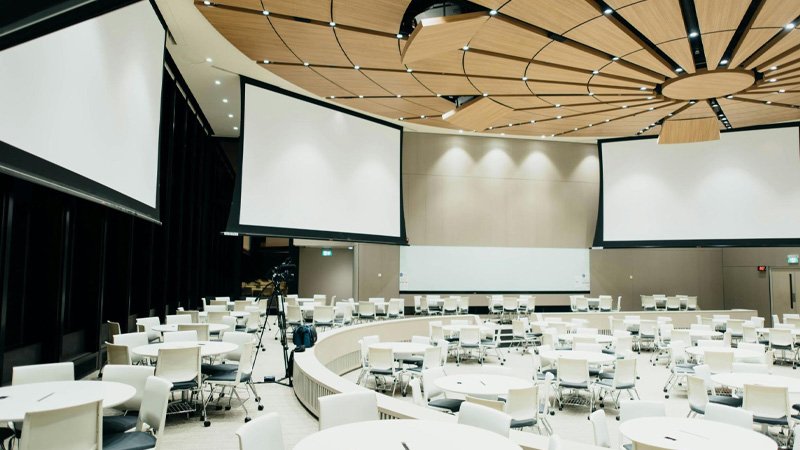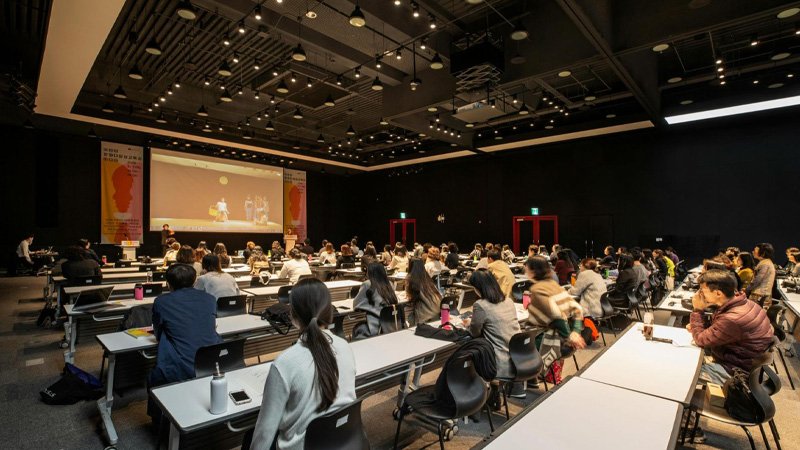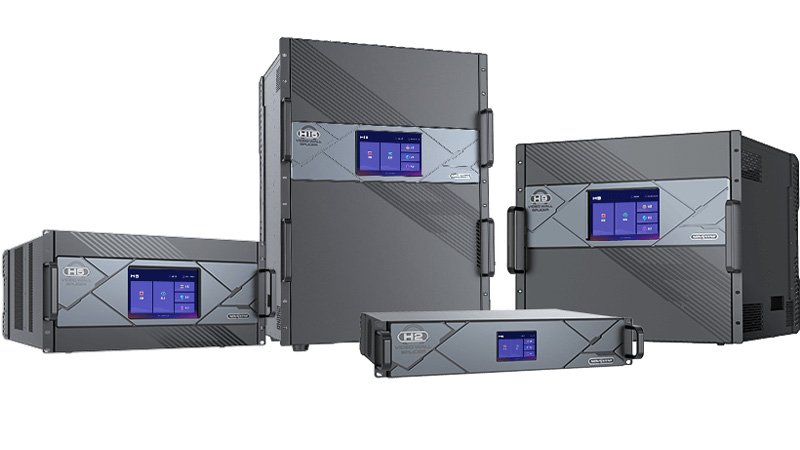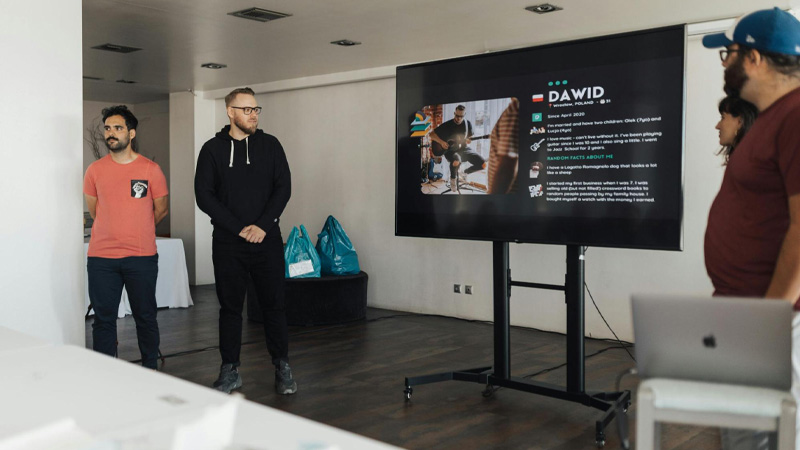As developments continue to expand in technology, there are many options for LED video wall processors. Because of the wide variety of options, it can be difficult to determine which product is best for your needs.
When choosing an LED video processor, only some devices will offer the same features and benefits, but it should overall have a beautiful visual display, seamless synchronicity between tiles, and, most of all, a good functioning LED controller behind it.
Determining what you need from your LED video wall processor can be challenging. Our comprehensive guide will show you what key features you should look for to choose the right display for your content.
1. Exploring LED Video Wall Processor Core Components
LED video wall processors are responsible for splitting the image into separate sections for display on individual panels. Also known as an LED video wall controller, they provide options for controlling the display’s color, size, and shape of the pictures. Each tile works together to create a single, synchronized output. These devices can be used in various digital systems, such as flat panels and LCDs, to achieve the largest display at a higher visual quality.
There are multiple components of the system dedicated to creating an LED display system that elevates your content to wow your audience. By learning about the basic components of these devices, you can better determine what requirements you need from your product. These basic components include:
LED Unit Board:
This component directly contains the necessary circuitry for the screen to function and impacts the display screen’s output. The unit board is comprised of individual driver chips, modules, and circuit boards responsible for controlling the systems behind the LED video wall processor.
LED Display Control System:
The display control system contains control cards that determine the storage capacity and function of the device itself. There are two types of control systems: synchronous and asynchronous.
○ Synchronous Control: The LED video wall processor can control all visual elements in real-time through synchronous control systems. It provides numerous options for instructing control cards on how to view content on LED screens.
○ Asynchronous Control: On the other hand, asynchronous control systems operate have an attached memory embedded in a sending card. This feature allows the system to be controlled without a computer monitor attached. When the media origin device powers down, it will still operate, depending on the storage capacity of the control card.
Control Board:
The control board helps control the brightness and hue of each LED tile in an LED video wall display. Also referred to as a scanning control board or just “scanner”, it generates signals within the processor that then execute instructions for the display. There are two types of control boards:
○ Static Control Board: Static control boards are for low-resolution content displayed with a fixed scanning method. While this option may provide less quality, it is also considered a more affordable option for LED video wall processors.
○ Dynamic Control Board: Dynamic control boards are dedicated to transmitting high-resolution media via a dynamic scanning method. The content quality produced will be higher with a dynamic control board but will also increase costs.
Wires and Cables:
These connectors within the LED video wall processor are responsible for transmitting power and data to the system. Data lines and flat lines connect the unit board to the control card. Transmission cables help connect the control cards to your operating computer. Power lines help provide electricity to the LED unit board and control board. All these wires and cables help improve the efficiency and output of the visual processor to produce your display.
Power Source:
Lastly, there is the power source. LED video wall processors work with one power source, depending on the system’s required voltage. Most LED video walls work with 220V or 110AC and convert it to DC power so that the display system can produce a smooth and seamless visual experience.

2. Key Elements of an LED Video Wall Processor
Having an LED video wall processor on hand can be beneficial in any setting, but depending on your budget, choosing a device means you need to be cost-effective in checking the price points of your products. When choosing an LED video wall processor, the product should meet or exceed your needs within your budget. Your choice of LED video wall controller should benefit you more than anyone and should offer these key elements:
● High Resolution:
Resolution is the highest selling point of any LED video wall processor, so when choosing a display system, make sure you find the highest resolution within your budget. Some of the best products out there can boast up to 8K or even 16K resolution at an affordable price, so keep this in mind when searching for your choice of product.
● Flexible Display:
When arranging your displays, you should have many options available. Your LED video wall display should offer multiple configurations for your content, such as portrait, landscape, single unit, or matrix. These options widen your choices for presenting visual content and can be a valuable investment.
● Easy Installation:
Traditional video wall systems used to have complex installation instructions, but many of today’s LED video walls offer easy-to-follow instructions. When searching for products, look for plug-and-play designs for an easy, hassle-free experience.
● Simple Interface:
A simple, easy-to-use interface allows you to adjust as needed. Interacting with your LED video wall display should not require technical knowledge and expertise and should always be user-friendly.
● Better Viewing:
Your viewing experience should be easily customized for any audience. Your product should contain features such as synchronization, scaling options, and color control to provide options for adjusting visuals.
● Cost-Effective:
When looking for LED video wall processors, you should look for one that matches or exceeds your requirements while within your budget. Take your time searching for products and comparing them to determine which suits your needs.

3. Your Options for LED Video Wall Processors
When you understand the basics and have your essential features listed for an LED video wall processor, it’s also important to know your available options. Each type of video wall processor will come with its own benefits and disadvantages, so when reading through these options, you can decide what LED video wall processor can meet your requirements:
● All-In-One, Network-Based Processor:
An all-in-one processor that focuses on splitting and delivering visuals in real time to support network streaming sources. These processors contain a CPU and video call software application to produce content. It also provides options for scalability and configuration and can produce high-resolution content through its ability to manage content in synchronicity.
● PC-Based Processor:
PC-based processors operate using a PC as their processing unit. While these systems offer great resolution and frame rates, they often require additional customization and content management software to control. These systems are often used for small-scale and large-scale video wall projects.
● Cloud-Based Processor:
These processors use cloud-based software to monitor the video walls and check the system’s status. The software can diagnose problems within the LED video wall tiles and can be used remotely, making it an excellent option for large-scale business projects that require a multi-faceted approach.
● Wireless Processor:
Wireless processors offer the ability to control the processor using a wireless system, excluding wires and cables from the installation process. They replace wires and cables through Bluetooth, giving the user the ability to control the screen’s features with their mobile device.
● Single Display Graphics Processor:
These processors work with touchscreen technology to allow the user to manage and view their content within a single display unit composed of two dual screens. They can display content from different sources and are widely applicable in various industries.
● Image Display Processor:
An image display processor only displays image content, but it produces image content at a higher quality than processors with multi-purpose services. These processors offer color grading features and a user-friendly interface for all image-related content and can be useful depending on your content.
● Standalone Processor:
When referring to standalone processors, most companies refer to the ability to control features from one vehicle to another, making them easily transportable. These systems contain all the necessary parts to function in any location and can be adjusted through configuration settings.
● Matrix Switch Processor with Scaler:
The matrix switch system produces a dynamic, affordable way to process content at a smaller size. While these processors have a limited resolution, they can be displayed using multiple inputs. It also requires a central computer to function close to the display tiles to work properly.

4. Factors to Consider When Buying an LED Video Wall Processor
Among the many options, there are additional factors you should consider when trying to gain the maximum return value in mind. Choosing an LED video wall processor that doesn’t have the features you need can incur a lot of costs. When you’re at the buying stage of the process, here are some additional factors to consider:
● Resolution Support:
The company you purchase your processor from should produce high-resolution LED video displays. Depending on the purpose of your purchase, getting a processor with the highest resolution possible can reduce the likelihood of blurry displays and problems viewing content at a farther viewing distance.
● Access Control:
Some control systems will offer ways to manage access to the system, such as password protection. Products that offer ways to control access from unauthorized users can help protect your content during public events.
● Image Adjustment:
Your LED video wall processor should always allow you to adjust images. Image adjustment features, such as image sharpness, contrast, fading, and color control, can enhance your viewers’ experience and make presenting content a more flexible, enjoyable experience.

5. Find The LED Video Processor You Need with LEDSINO
LED video wall processors give you various options for visualizing your content. At LEDSINO, our display systems offer high-quality resolutions that match your competitors and easily meet your budget. Our consultants can help you find the right LED wall processor you need, no matter the size and scale of your project.
Our Nova Pro UHD 3-in-1 video controller is a popular option that delivers on all the latest innovations. Its high capacity 4k resolution integration combines with our powerful Master VI control software to provide seamless playback, flawless sending, and painless integration with cabinet mapping. For more information, contact our consultants today to learn more about our range of LED display products.



